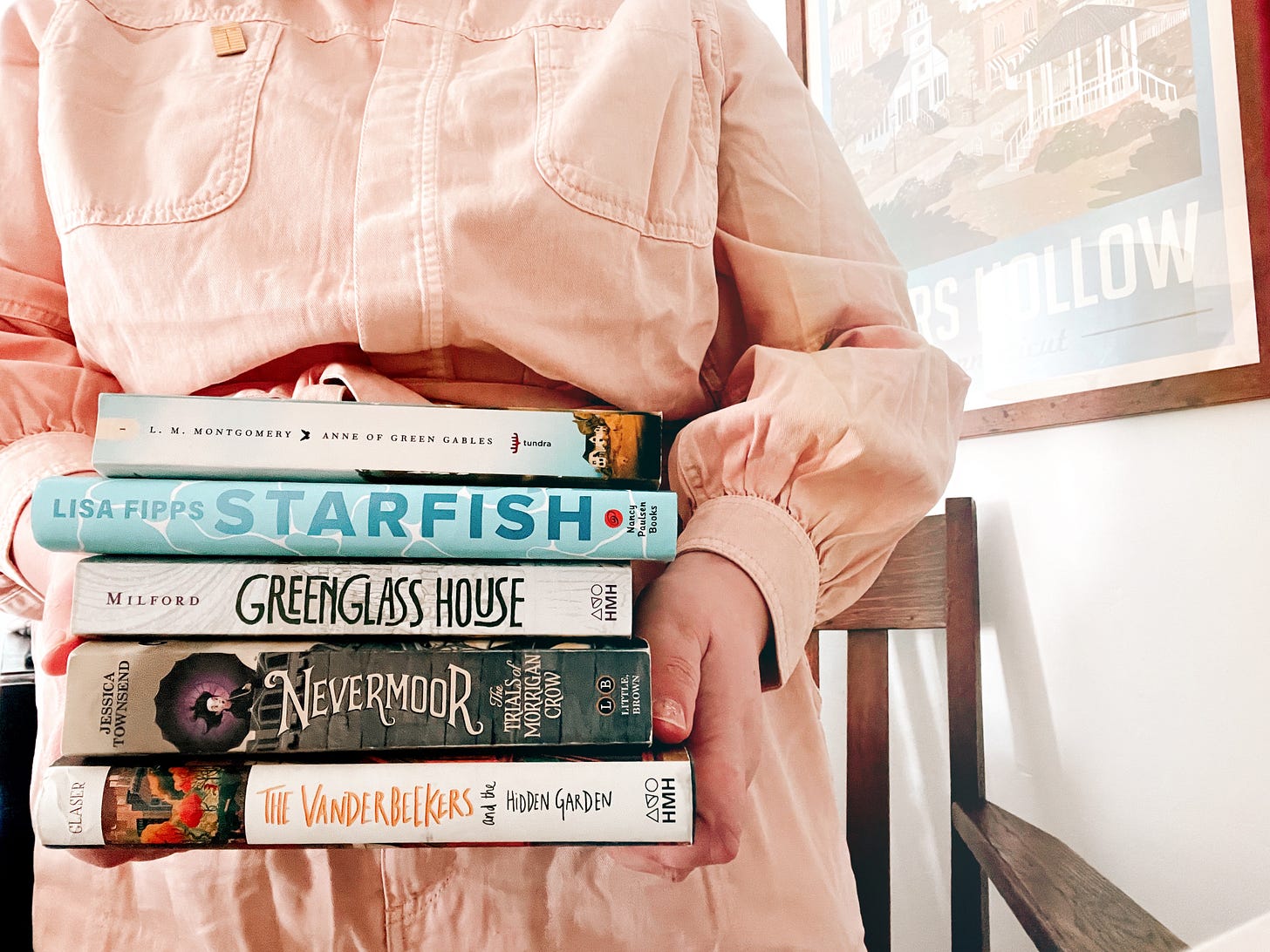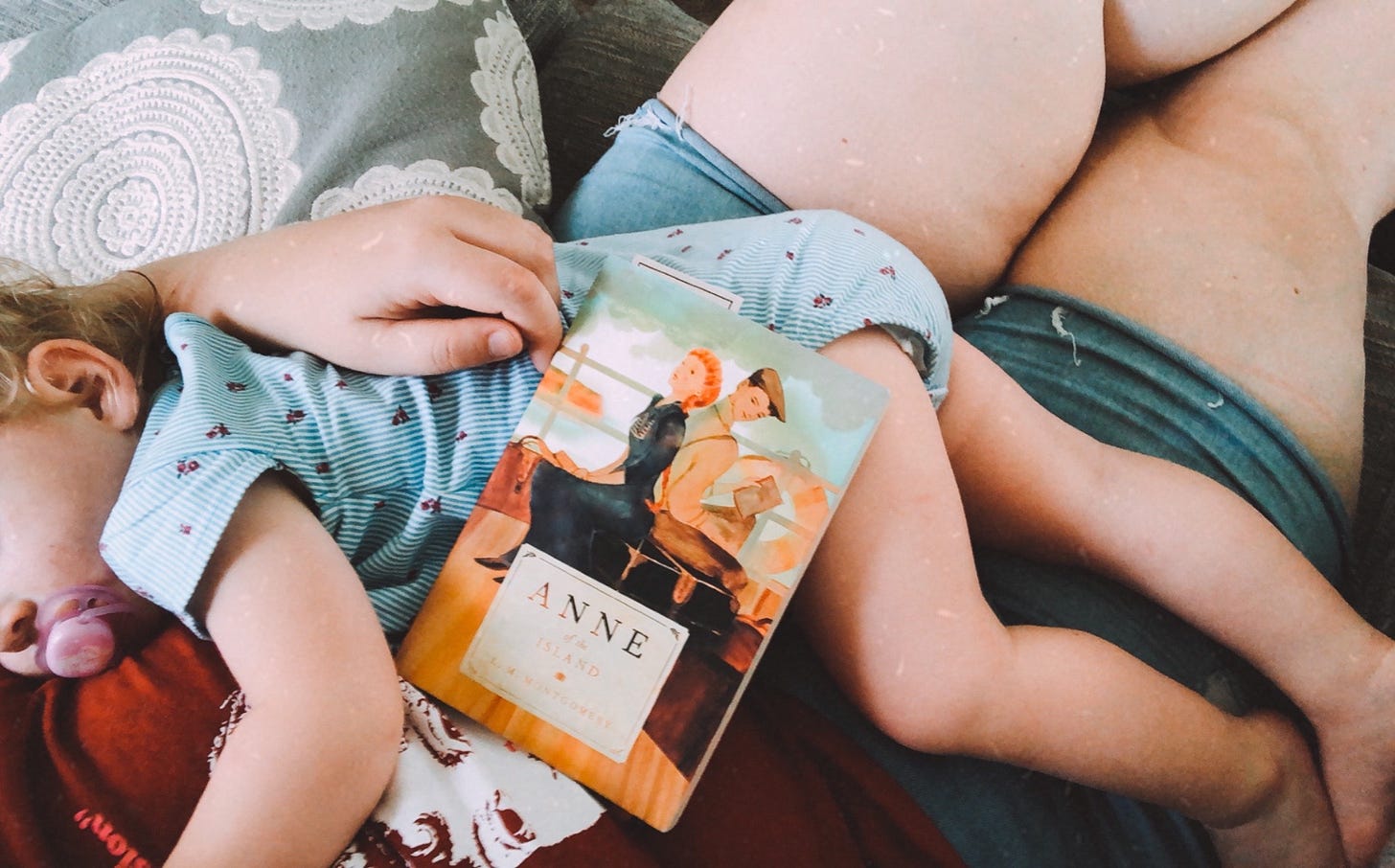The Magic Elixir of Children’s Literature
on hope, parenting, and caring for our tender hearts
I thought I would accomplish substantial amounts of reading during the first few months of the pandemic. I had additional free time I could never find otherwise and could not to leave my house, yet I always found myself paralyzed in anxious thought. Time left was spent in a lonely home office, listening to daily reports from the governor on the steep increase in COVID-19 cases while my husband sanitized a once-weekly grocery trip in our front kitchen, my daughter toddling around a quiet house.
When I could read, I found myself continually returning to children’s literature as I tried to make sense of a world in constant flux and increasing polarity. As one crisis unfolded upon another, I began finding new demarcation lines surrounding myself, isolating me personally and professionally. Children’s literature was a rejuvenating spring of hope and comfort, along with my short-lived obsession with a beloved sourdough starter.
Katherine Rundell seems to agree that children’s literature can be the ultimate source of comfort during trying times as well. In her interview with Wisconsin Public Radio, Rundell shares,
“Children’s books are books that traffic in hope and impossibility. They’re books which give you a sense of the world as being colossal. Children’s books say to you—hope matters; love matters.”
Yet there is an unnecessary stigma that runs amuck through some literary circles. Some find adults reading literature meant for youth and children to be a waste of valuable time and lacking the rich complexities and literary techniques of adult literary fiction. As Ruth Graham shared in her opinion piece for Slate, “It’s not simply that YA readers are asked to immerse themselves in a character’s emotional life—that’s the trick of so much great fiction—but that they are asked to abandon the mature insights into that perspective that they (supposedly) have acquired as adults.”
To some, reading children’s books cannot give us the same rich nuance and nourishment that books written for adults can, but asking readers to abandon a whole portion of literature is like living life as an artist who never uses the color yellow in their work. Children’s literature has a valuable place in the literary life of children AND adults.
One of the most successful types of children’s stories is the Bildungsroman, a novel that depicts a character’s growth, usually as it relates to morals and psychological issues. These defining parameters give us a way to observe these changes, especially during childhood and adolescence when development is at an accelerated speed. For children, these stories give the language to understand interior changes, to acknowledge a world that is vast, awe-inspiring and overwhelming. It builds vocabulary, emotional depth, and expands one’s worldview. It also entertains, relates, and helps youth see themselves in the context of the larger picture, offering hope for what’s on the other side of their mountain.
Years of schooling and life experience may have sharpened our critical dexterity and expanded our vocabulary, but those that lay claim to the notion that children’s and young adult literature are nostalgic remnants of a time come and gone do themselves a great disservice. For how can we truly be a part of incredibly vast and complex world without acknowledging the child and adolescent that still lives in all of us?
We as adults do not stop growing, living time and again our own Bildungsroman, our sense of awe only lost to a world in which we’ve been disillusioned and isolated. We don’t stop being challenged by issues dear to us; our vulnerable hearts don’t stop beating. At the heart of many children’s and young adult novels is a lovable or redeemable protagonist trying to make sense of a world that seems insurmountable.
These stories of growth can mirror own periods of intense growth at any age, many times in imaginative and creative ways. They, as Rundell states, provide hope. They hold our hands and lighten a heavy heart by reminding the us of today and yesterday that we are not alone. They help us to reframe childhood, to process our own traumas, and find the path to healing. When we lose our mentors in life to abandonment, ideology, or death, children’s books give us mentors that deliver the timely messages we all need, whether comforting or heartbreakingly truthful. As some work on raising their own, children’s literature helps remind us of the humbling and challenging quest we bestowed upon ourselves—to do our best to parent astonishing children like the ones tenderly rendered on the printed page.
As a reader who reads across most genres and age categories, I’ve come to appreciate the complexity of adult literature and the empowerment of children’s literature. In fact it is, in part, these two areas of enrichment in my life that I believe the two pair so well together. I can appreciate the way that many adult novels dive deeply into subjects with nuance, many times raising more questions, creating space for ambiguity and a range of conflicting emotions and truths that live side by side each other in our lives. And yet, diving deep into the complexities of life can sometimes blind us to the necessity of now. Life may be complex, but it is also fleeting.
These two aspects of life live in tension with each other, and we must honor them both. In final pages of her middle grade novel Frankie & Bug, Gayle Forman explores this tension in a conversation between one of the title characters, Bug, and her mother, as they contemplate how a world could be so unkind to their friends:
“Bug sniffed, “You always say that life isn’t fair, that the best we can hope for is that it’s just. But how is what happened to Phillip just? How is what’s going to happen to Frankie just?
Mama was quiet for so long Bug thought maybe she wouldn’t answer. She look back out the window. Frankie’s plane was third in the takeoff line when Mama finally spoke. “Sometimes justice takes time.”
Bug exhaled a shuddered sigh. “Why do grown-ups always say that? Don’t you know how hard it is to wait?”
Mama nodded slowly. “Maybe we forget.” She turned toward the runway. Frankie’s plane was now second in line. “Thanks for reminding me. And for reminding me that it’s up to all of us to hurry towards justice.”
Thank you to the Novel Pairings community for the thoughtful conversations and resources that inspired this essay. If you are interested in learning more about Novel Pairings, or joining their Patreon community, please visit their website at www.novelpairings.com.
Next my next newsletter, I’ll be back with a curated newsletter chock-full of children’s literature recommendations and resources, including some that I regularly use in my library work.




Thank you for this. I'm planning to revist some of my childhood favorites next year in lieu of reaching for new titles. One of my goals is to slowly read more middle grade novels to build a collection for my kids.